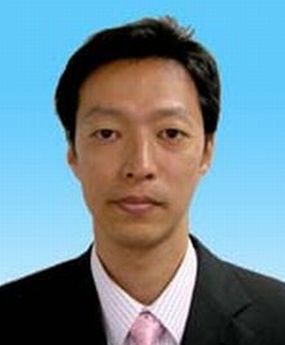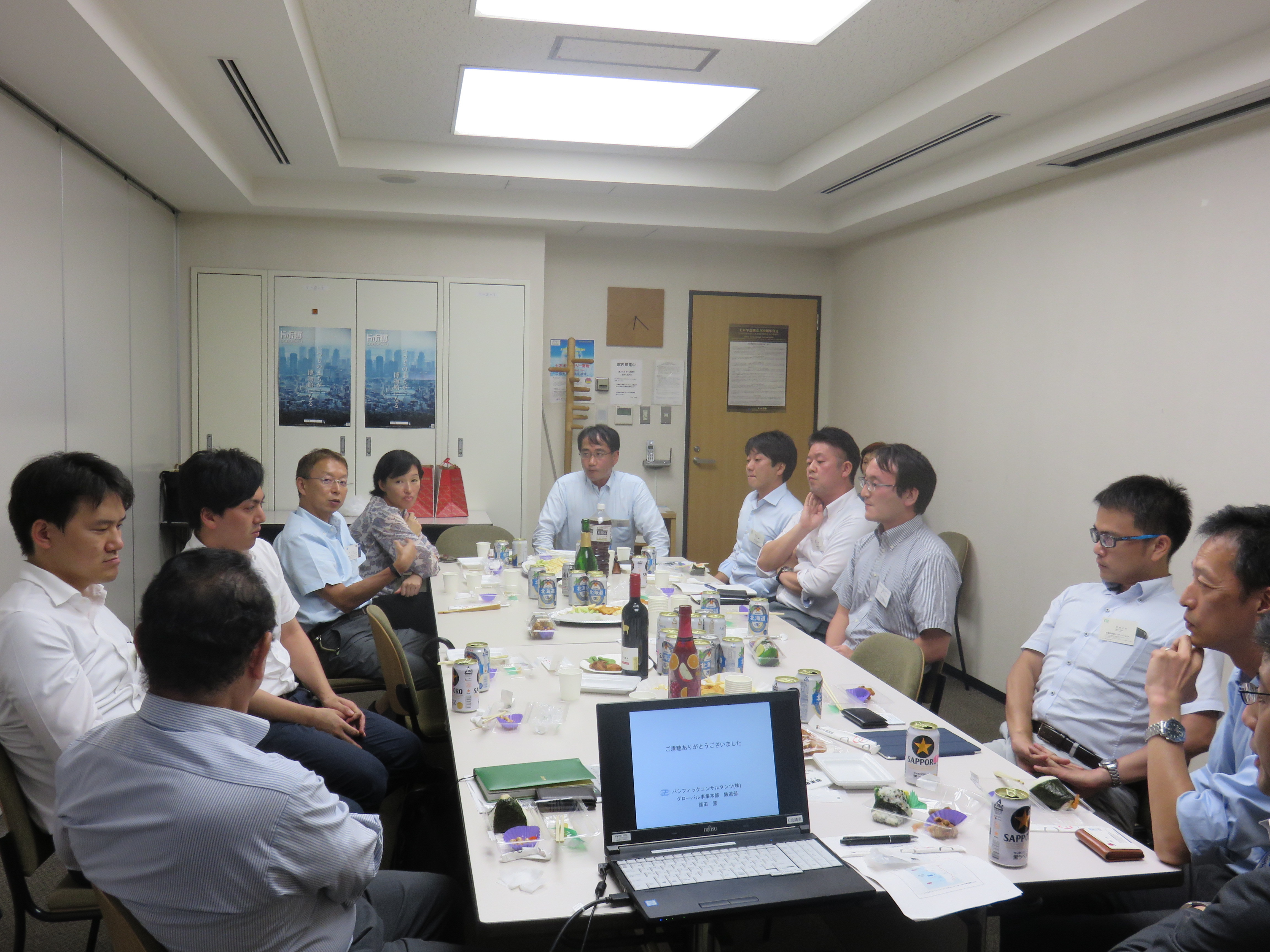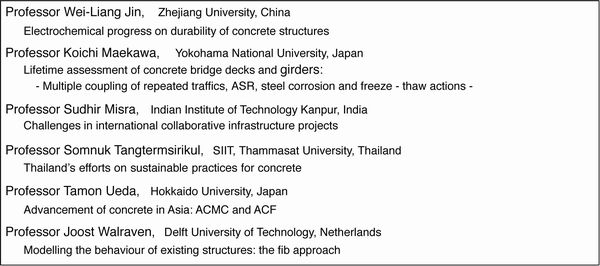IAC News
IAC News No.87, January 2020
Japan Society of Civil Engineers International Activities Center Jan 14, 2020 IAC News No.87
New Year’s Greetings
“Start a New Chapter in Civil Engineering”

Yasuo Hayashi
107th JSCE President
Happy New Year. I wish you a happy, healthy and prosperous year ahead and the best of luck with your resolutions.
Looking back the past year, we experienced more heavy rainfalls and winds than ever, causing serious damages linked to climate change. Heavy rains with an hourly-rainfall of over 100 mm, which set a record-breaking, hit the northern Kyushu area in August and caused inundation and floods around that area. Then, Typhoon No. 15 hammered the Chiba area in September, where the maximum 57.5m/s wind speed was recorded, leaving considerable damages to the area’s lifelines such as electric power lines and water supply, and in the following month, the powerful Typhoon No. 19 made unprecedented rains and floods in the Kanto, Koshinetsu and Tohoku areas, impacting on human lives, people’s everyday lives, houses and properties, and even economic activities.
We have experienced numerous natural disasters after the Great Hansin-Awaji Earthquake. Looking at the media reports covering increased risks of natural disasters, I have noticed that their reports often explain natural disasters with the expressions “record-breaking,” “historic levels,” and “unprecedented.” I can’t help having anxiety and fears about the society being vulnerable to natural disasters which we are living in. While I one of civil engineers have made great efforts to build strong and long-lasting structures, I have come to realize that we civil engineers are facing a new and difficult challenge and need to develop approaches, skills and technologies to deal with it. We, taking into account river basin management and protection, have to strengthen not only hard structural measures such as levees and dykes, but also soft non-structural measures such as evacuation plans and drills and land-use plans. We shall more communicate with the central and regional governments and the citizens, and coordinate and integrate them in order to effectively and successfully overcome the challenge.
A safe and secure society is what any member of society wishes for at any given time. Realizing their hope is placed on the top priority of JSCE’s agenda. The JSCE will consider discuss essential approaches and measures to respond to future heavy rainfall events and floods likely caused by climate change with Ministry of Land, Infrastructure, Transport and Tourism and make proper proposals to build the society for which people wish.
Olympic Games 2020 to be held in Tokyo in July 2020 attracts global attention. Right after Tokyo was chosen as the host city of the games, it has received inquiries and requests from overseas about tours to the Olympic venues and facilities. The construction of venues, facilities and related infrastructures around the host city have made good progress to be ready for visitors in and outside the country by then. The central government targets increasing inbound tourists to 60 million in 2030. Focusing on the Olympic Games as a mid-term goal, it has taken steps to boost travel demand to Japan, and requests the host and neighboring cities to develop their infrastructures and facilities to meet the inbound tourism; creating attractive urban areas with transportation hubs such as airports and railway stations and designing and establishing new transportation systems for example Mobility as a Service (MaaS) may be some options. When visiting another country, you may find interesting beautiful, unique infrastructures. For instance, a station of the Kaohsiung Mass Rapid Transit (KMRT) Lines features the Dome of Light made with beautiful stain glass, and the dome attracts many visitors from inside, outside the city and even overseas every day. We will build the high-quality infrastructures which people care willing to drop by and use with safe, convenient and comfortable feelings
Then, looking outside, we notice that each country has its own ideas and ways to infrastructure development: some countries address the same issues and challenges as we do, and some innovate the whole new approaches, methods and technologies which we like to learn from them. We will strengthen communication and information with our overseas counterparts in order to broaden our perspective and acquire new approaches, and then address various issues and challenges timely and effectively utilizing what we have acquired.
On behalf of the JSCE, I sincerely thank you for your continued support and cooperation and are looking forward to working with you to achieve goals.
The 3rd Engineers’ Lounge “DOBOKU”

Koichiro Shibazaki
(PACIFIC CONSULTANTS CO., LTD.)
The Professional Development and Education Program Group of the JSCE International Activities Center holds Engineers’ Lounge “DOBOKU” program on a regular basis. This program invites professional engineers, performing brilliantly in overseas projects, as instructors for promising young engineers who intend to perform on the global stage. The instructors share, with fledgling engineers, a wide variety of issues, ranging from detailed overseas project experiences and obstacles to meaningful overseas tasks, challenging issues, future prospects and valuable messages to budding engineers, and also have an opportunity to have open discussions.
At the 3rd round of “DOBOKU,” on September 24, 2019, we invited Messrs. Hiroshi Shimada and Isao Namikawa from Pacific Consultants Co., Ltd. They delivered lectures on a railway project in the Republic of the Union of Myanmar as one of their valuable experiences.
In this session held in the late-summer heat, around 15 participants enjoyed the lounge session over canned beer, other beverages, and snacks in a cozy atmosphere. Mr. Shimada delivered a speech on “project for weak ground and vibration measures with sandbags in the area along the railway.” He touched upon the project overview and described the onsite, flooded weak ground status and features, which were difficult to install heavy equipment, using video footage introducing sandbag technologies for weak ground measures. He also gave the attendees the construction method and the pre- and post-construction comparison together with future challenges. And Furthermore, he explained various experiences, covering construction troubles or injury accidents, slope failure in the earth filling portion brought by torrential rain in the rainy season after the construction, KY activity (KY stands for “Kiken Yochi,” meaning risk prediction in Japanese) for Myanmar workers every morning and hardships at the site. In the Q&A session, he showed the participants the same sandbag structure as that used on-site, providing them fruitful information.
Meanwhile, Mr. Namikawa made a presentation about “project for railway improvement between Yangon and Mandalay.” He outlined the project, the status of obsolete bridges the river conditions in the rainy season and detailed design works. He also mentioned that the bridges were seriously dilapidated beyond what we assumed in the Japanese maintenance system and gave firsthand on-site experiences, covering railway earth filling and the railway bridges damaged by bursted dam. He also talked about technology in detail and the knowledge and lessons gained from this project on operational and individual levels, and introduced daily lives, entertainment and tourist destinations during the project period in the country, supplying the novice engineers access to valuable information.
I believe that the Engineers’ Lounge “DOBOKU” offers as a precious opportunity for up-and-coming engineers to directly gain meaningful, attractive overseas project experiences directly from the expert. As it is considered that the “DOBOKU” will be organized on a regular basis, I hope that this program will be more meaningful through a trial and error process in the course of a series of sessions.

Mr. Namikawa (left) and Mr. Shimada (right)

Mr. Shimada Introduces “D・BOX”

Participants Enjoy the Discussion
【Report by Koichiro Shibazaki (Professional Development and Education Program Group, IAC)】
The 3rd ACF Symposium on Assessment and Intervention of Existing Structures
The 3rd ACF Symposium on Assessment and Intervention of Existing Structures was held at Hokkaido University in Sapporo, Japan, from September 10-11, 2019. The Asian Concrete Federation (ACF) and Japan Concrete Institute (JCI) were co-organizer of the symposium, and JSCE sponsored this.
ACF has held international conferences every 2 years in various Asian countries since its establishment in 2004. Since 2015, "ACF Symposium" has been organized in alternate years to the ACF Conference. The 1st ACF Symposium on Ultra High Performance Concrete was held in Kolkata, India on October 7, 2015, and the 2nd ACF Symposium on Innovations for Sustainable Concrete Infrastructures was in Chiang Mai, Thailand on November 23-25, 2017.
The main theme of the 3rd ACF Symposium was "Assessment and Intervention of Existing Structures." Nowadays, inspection, monitoring, evaluation, prediction, maintenance and intervention, and optimal life cycle management were given the focus of intensive research and technical development and implementation.
114 papers from 14 countries were submitted and participants discussed in 16 sessions (Table 1 and 2).

Table 1 Session Theme

Table 2 Participating Countries
And 6 professors gave keynote lectures (Table 3).

Table 3 Keynote Lectures
As a part of the Symposium, the Professor Tamon Ueda Session was held to honor his accomplishments in the field of maintenance and repair. He is also one of the founders of ACF and International Committee on Concrete Model Code for Asia (ICCMC), and has made a significant contribution to the expansion of ACF activities.
Many participants engaged themselves in vigorously discussion in each session for two days. The winners of the best papers award were announced and honored at the closing session (Table 4).

Table 4 Best Paper Award
The symposium ended successfully. We hope that this symposium will help to enhance maintenance engineering on concrete structures in Asian countries.
* This report cited some parts from 3rd ACF symposium website.
http://www.eng.hokudai.ac.jp/acf2019/index.htm

Lecture by Prof. Tamon Ueda

All Participants Come to the Outside
【Reported by Ryosuke Takahashi (Akita University)】
The Conference of Taiwan Bridges Management and Real Time Monitoring
A Brief History of Taiwan Bridges Management and Real Time Monitoring: From 921 Chi Chi Earthquake to 88 Typhoon

Yoshiyuki Yasukawa
(East Nippon Expressway Company Limited)
Following the fall of the bridge in Nanfangao in eastern Taiwan on 30th September 2019, the Ministry of Transportation in Taiwan asked the Chinese Institute of Civil and Hydraulic Engineering (hereinafter referred to as “CICHE”) its accident survey and requested to hold a conference for local road managers to raise awareness on the current status and issues of bridge maintenance. On conferencing, CICHE made a request to the Japan Society of Civil Engineers (hereinafter referred to as “JSCE”) to provide a topic on the current situation of disaster prevention and maintenance for bridges in Japan. To meet this requirement, I participated in this conference.
This conference was held at International Conference Hall, Chang-Yung Fa Foundation in Taipei city, on 15th November and there were about 300 participants (half are engineers and half are local administrators). Although the survey is still now in operation, the theme of this conference is based on the present bridge managements apparently different from past natural disasters, and presenters introduced several problems and their measurements working on now, such as the inspection using UAV technology, bridge health monitoring system and bridge disaster management platform with ICT and AI. From this conference, I found that this situation is almost same in Japan and they have strong awareness for risk in bridge present condition. Prior to the conference, I made a courtesy call and had a brief discussion with the Ministry of Transportation, the promoter, and the largest construction consultant company, CECI, one of the sponsors, and I saw streets and structures through the window on my way to destinations by car. This precious experience has widened my knowledge as well as the participation in conference.
Finally, I would like to express my gratitude to Ministry of Transportation, CICHE and JSCE International Activities Center for giving precious opportunity to participate this conference and to get to know many distinguished Taiwanese engineers.
*For the full report, please visit the website: http://committees.jsce.or.jp/kokusai0901/node/11

Mr. Wang of CICHE President Opens the conference.

Visit to Ministry of Transportation with CICHE Executives.
【Report by Yoshiyuki Yasukawa (Committee on Structural Engineering)】
Updates
-
Up-coming Events
Japanese Civil Engineers the Global Leaders Symposium Series No.15 (February 5, 2020)
http://committees.jsce.or.jp/kokusai/node/157 -
Half Day Workshop on Maintenance of Concrete Structures –Durability Assessment, New NDT Method Introduction, AI & i-Construction Application in Japan
(14:00-17:30, March 5, 2020@Nanyang Technological University, Singapore)
https://www.facebook.com/JSCE.en/posts/3193826163980080 -
One Day Seminar on Assessment of Thermal Cracking in Mass-Concrete
(9:00-17:40, March 6, 2020@Nanyang Technological University, Singapore)
https://www.facebook.com/JSCE.en/posts/3193843887311641 -
jhappy - JICA’s Grant Aid Cooperation -
Facebook: https://www.facebook.com/jhappy20161110/
Twitter: https://twitter.com/jhappy_official -
The International Infrastructure Archives
– A Compilation of Japan’s Greatest Projects in Transfer of Civil Engineering Technology in Service –
http://www.jsce.or.jp/e/archive/ - IAC “News Pick Up!!” on the JSCE Japanese website
http://committees.jsce.or.jp/kokusai/node/138
- Summary of featured articles in JSCE Magazine Vol. 105, No.1, January 2020
http://www.jsce-int.org/pub/magazine
- Journal of JSCE
https://www.jstage.jst.go.jp/browse/journalofjsce
IAC News Subscription
The IAC News is one of the communication tools to share information and ideas with the members. We would like to invite you, your friends and colleagues to join the communication and to subscribe the IAC News. Please register online: (http://www.jsce-int.org/node/150). We look forward to meeting you.
